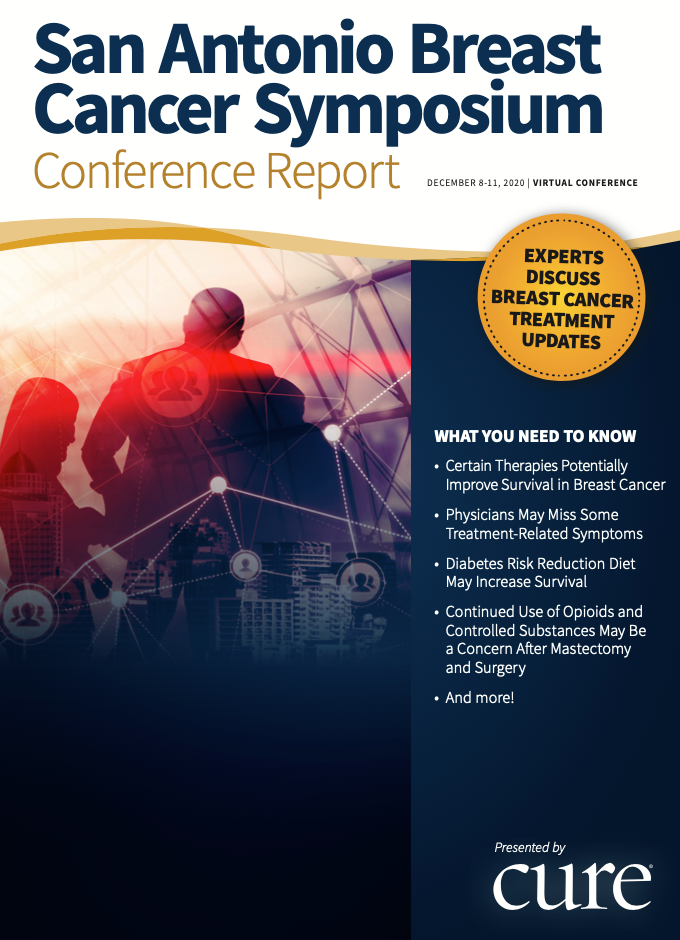Publication
Article
CURE
Physicians ‘Systematically’ Miss Substantial Symptoms in Certain Patients With Breast Cancer
Author(s):
Of note, the results indicated that patients with breast cancer who were younger than 60 and of Black or other race were more likely to experience under-recognized symptoms by their physician.
Data from a multi-practice consortium presented at the 2020 San Antonio Breast Cancer Symposium demonstrated that oncologists frequently under-recognize substantial symptoms in patients with breast cancer receiving radiotherapy after undergoing a lumpectomy, highlighting a need to improve symptom detection.
Of note, the results also indicated that patients who were younger than 60 and Black or another race were more likely to experience under-recognized symptoms.
“I think this is a really important area for future research. One thing that we've done relatively poorly thus far is disaggregated the experiences of our racial and ethnic minority patients and understood what intersections there are between, for example, gender, and race or ethnicity and how the unique lived experiences of any individual patient will reflect all of the experiences that they have had to date that they bring with them to the exam room,” lead study author Dr. Reshma Jagsi during a press briefing.
“And so, we absolutely need to do more research to understand what cultural, societal, and experiences that have been brought by groups that are underrepresented in our population might be so that we can tailor our treatments and our support accordingly.”
Using a large multicenter consortium of 29 practices in Michigan, Jagsi, deputy chair of the Department of Radiation Oncology at University of Michigan, and colleagues aimed to compare physician and patient reports of acute toxicity during breast radiotherapy to specifically analyze if under-recognition of toxicities were pronounced in certain subgroups.
Between January 2012 and March 2020, 13,725 patients completed radiotherapy at one of the practices included in the Michigan Radiation Oncology Quality Consortium. Among those who completed radiotherapy, 9,941 completed at least one patient-reported outcome (PRO) questionnaire while receiving radiotherapy.
Where physician assessments via Common Terminology Criteria for Adverse Events (CTCAE) reporting of patient toxicity were available within three days of PRO evaluations, Jagsi and colleagues compared the difference in ratings on four symptoms: pain, itching, swelling and fatigue. The main symptom the researchers wanted to evaluate was pain, which was defined using the Brief Pain Inventory rating pain within the past 24 hours as worst, least, average and “right now.” If patients reported their pain as a 4 to 6 on a 10-point scale, whereas they were considered to have under-recognized pain if the physician graded it as absent or 0. For patients who reported severe pain as a score of 7 or more, they were deemed to have under-recognized pain if the physician graded it as less than or equal to grade 1 mild pain.
In measuring the frequency of bother from itching and swelling, symptoms were considered under-recognized if physicians graded those symptoms as absent when patients graded them as bothered often or all the time.
As for fatigue, a patient’s symptoms were deemed under-recognized if they reported experiencing fatigue most of the time and their physician said the condition was absent.
Approximately one-third of patients reported moderate or severe pain (34.5%; 3,433 of 9,940 patients) and frequent bother from itching (30.6%; 3,039 of 9,923 patients). Less than one-fourth of patients reported frequent bother from swelling (23.9%; 2,363 of 9,906 patients) or severe fatigue (24.9%; 2,209 of 8,860 patients).
Under-recognition of at least one of the four symptoms occurred at least once during the treatment course of 53.2% of patients who reported at least one substantial symptom while receiving radiotherapy.
“Understanding whether physicians detect whether patients are experiencing substantial toxicity is important, both because recognition of symptoms is necessary for appropriate supportive care and because clinical trials investigating new treatment options often rely on physician assessments using common toxicity criteria for adverse events,” said Jagsi.
The results, according to Jagsi, demonstrate that physicians systematically miss substantial symptoms in certain patients, which highlight the need to improve symptom detection to reduce disparities in radiation therapy, experiences and outcomes.
Following the presentation of the data, SABCS Co-Director Dr. Virginia Kaklamani said it was surprising to see that 30% of cases of what patients were reporting as issues associated with their radiation therapy were underrecognized by physicians. Moreover, that it was surprising to see those cases higher in young women and racial minorities.
“We need to do a better job,” said Kaklamani, leader of the Breast Oncology Program at the University of Texas Health San Antonio’s MD Anderson Cancer Center. “That's really what it is, we need to conduct studies where patient-reported outcomes are being reported, and we as physicians need to listen more to our patients.”
A version of this story appeared on OncLive® as “Symptoms Under-Recognized in Patients Who Receive Radiotherapy After Lumpectomy.”
For more news on cancer updates, research and education, don’t forget to subscribe to CURE®’s newsletters here.




